The flag of Ecuador symbolizes the nation’s diverse culture and enduring aspirations and transcends mere state representation, encapsulating Ecuador’s dynamic essence and experiences. More than a national symbol, it reflects Ecuador’s varied landscapes and storied past.
Ecuador Flag
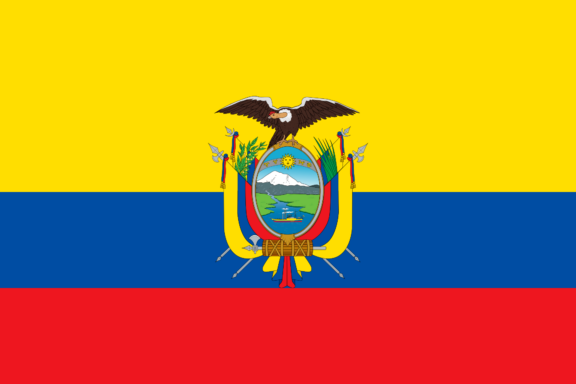
The Ecuadorian flag displays a horizontal yellow, blue, and red tricolor, with the yellow band at the top being wider. The state and civil versions feature the national coat of arms in the center, depicting an Andean condor and a shield symbolizing strength and biodiversity. This design reflects Ecuador’s unique geography and its path to sovereignty.
Ecuador Flag: Color Palette
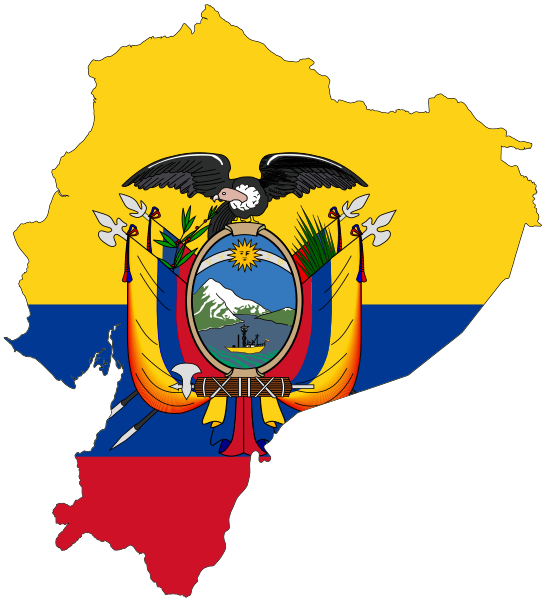
Ecuador Flag Emoji: 🇪🇨
The color palette of Ecuador’s flag is a harmonious blend of three distinct hues, each chosen for its deep symbolic resonance. This tricolor arrangement forms a striking visual identity for the flag, setting the stage for a deeper exploration of the individual significance of each color in the following section.
Meaning of Each Color
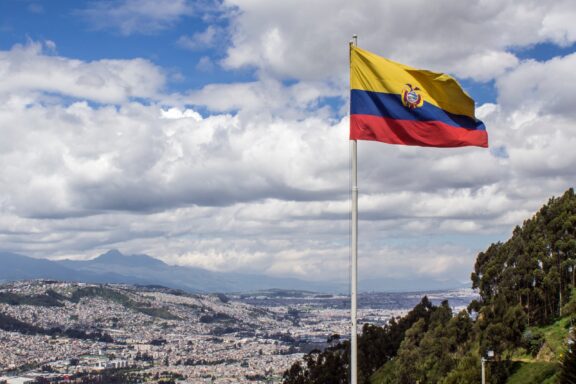
Yellow
The flag’s topmost stripe, yellow, symbolizes the nation’s abundant natural resources and rich agricultural lands. Historically, it also represents the sun and the wealth generated from Ecuador’s diverse landscapes.
Blue
The blue stripe indicates the clear skies and the Pacific Ocean, which is crucial in shaping Ecuador’s history, trade, and maritime heritage. This color also echoes the sky over the Andes Mountains, a significant geographical feature of Ecuador.
Red
The red stripe at the bottom of the flag symbolizes the blood and bravery of those who fought for independence and freedom. It is a tribute to the valor and sacrifice of Ecuador’s heroes and reflects the enduring spirit of resilience in the face of adversity.
Ecuador Coat of Arms

The coat of arms of Ecuador serves as a symbolic representation of the nation’s strength, diverse heritage, and aspirations. It underscores the importance of Ecuador’s natural wonders and geographical significance, featuring prominent symbols like the Andean condor.
The inclusion of a steamship navigates the country’s journey towards progress and modernization, reflecting its dynamic evolution. Draped with the national flag, the emblem emphasizes patriotism and unity. The coat of arms, as a whole, encapsulates Ecuador’s journey from a rich historical past to its present and its desire for a better future.
Historical Evolution and the Meaning Behind Changes
Ecuador’s flag, reflecting its evolving identity, originated from its association with Gran Colombia, featuring the yellow, blue, and red colors designated by General Francisco de Miranda. Post-independence in 1830, these colors persisted, symbolizing the shared heritage with Gran Colombia.
Throughout the 19th century, the flag experienced numerous modifications, mirroring political changes and the quest for a unique Ecuadorian character. These alterations ranged from added symbols to varied color proportions, highlighting the nation’s internal dynamics and efforts to distinguish itself from its historical ties.
The current tricolor design was finalized in the early 20th century, establishing the specific bands and incorporating the coat of arms for official use. This standardization marked a period of national consolidation and symbolized Ecuador’s distinct sovereignty and identity.
The flag’s enduring colors from its Gran Colombia days now serve as a reminder of Ecuador’s historical journey and its ongoing narrative as an independent nation.
Overall Symbolic Meaning of the Flag
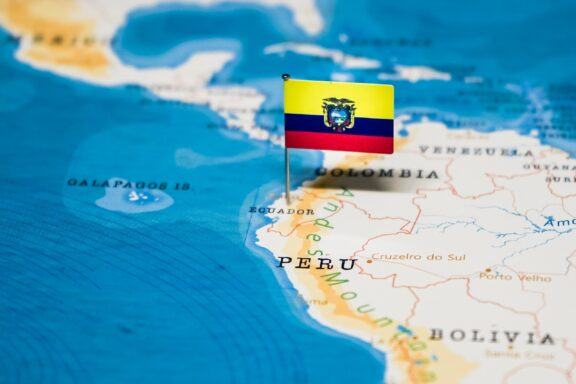
The Ecuadorian flag represents the country’s harmonious essence, resilient people, and vision for the future. It represents the blending of Ecuador’s diverse landscapes and rich history with its contemporary aspirations. More than a national emblem, it reflects Ecuador’s collective spirit and pride, marking its prosperous past and ongoing role on the world stage.
Similar Flags to the Flag of Ecuador
Several other nations’ flags bear a resemblance to that of Ecuador. Let’s explore the top flags similar to Ecuador’s and the reasons behind their similarities:
Colombia
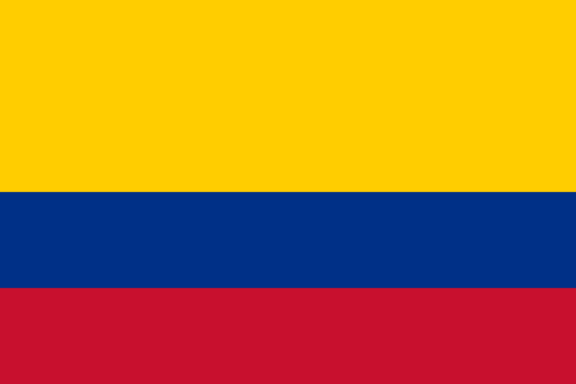
Colombia’s flag resembles Ecuador’s, as both feature the same tricolor design of yellow, blue, and red. This similarity stems from their shared history as part of Gran Colombia, a nation that existed in the early 19th century. The flags represent the enduring connection and common heritage between these nations.
Venezuela
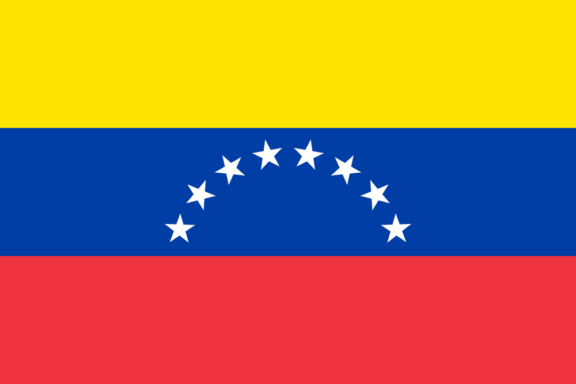
Like Ecuador and Colombia, Venezuela’s flag also consists of yellow, blue, and red bands, a nod to their joint past as part of Gran Colombia. The design symbolizes the shared struggles and aspirations that shaped their early histories and the continued cultural and historical ties among these South American countries.
Bolivia

Although different in its primary layout, Bolivia’s flag shares the red, yellow, and green colors in Ecuador’s coat of arms. This resemblance is more coincidental, as Bolivia’s colors represent different aspects of its national identity and history.
Conclusion
Ecuador’s flag embodies the nation’s diverse heritage and resilient spirit, marking its distinct place among the world’s flags. It represents not just national identity but also unity and pride for Ecuadorians.
This flag symbolizes their shared history and aspirations, resonating deeply with citizens as a beacon of their collective journey and hope for the future.
Image Sources and Copyright Information
- Ecuadorian Flag Over Quito Skyline: © Vicente Garces Custode/Shutterstock
- Ecuador Flag Pin on Map: © hyotographics/Shutterstock